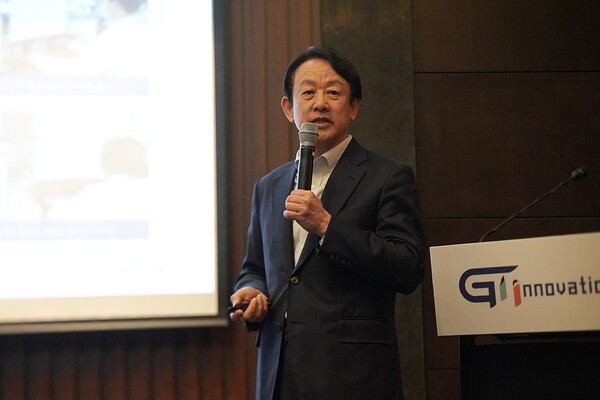GI Innovation outlined ambitious plans to transfer at least five additional technologies within the next five years at its initial public offering (IPO) briefing session at the Conrad Hotel in Yeouido, Seoul, Monday.

Established as a bio-venture in 2017, GI Innovation researches and develops next-generation immunotherapy drugs based on dual fusion proteins.
The company's major pipelines include dual fusion immuno-cancer drugs GI-101 and GI-102, and allergy treatment GI-301 which are in clinical trials alongside other preclinical drug candidates GI-104, GI-108, and GI-305.
These drugs were developed based on its high-efficiency screening platform, GI-SMART, which can quickly discover optimal dual fusion protein candidates. GI-101 and G-108 were selected for the National Drug Development Project worth 7 billion won and 2 billion won respectively last year, raising expectations for new drug development.
Overall, GI has secured nine pipelines as well as 27 patent registrations and 138 patent applications in 22 countries.
According to the company’s IPO plan, the company will predict the demand of institutional investors' subscriptions on March 15-16 and open the subscription for two days to retail investors on March 21-22. The scheduled listing on the tech-heavy Kosdaq is March 30 which will be co-managed by NH Investment & Securities, Hana Securities, and Samsung Securities.
Through the IPO, the company plans to offer 2,000,000 shares at 16,000 won to 21,000 won per share to raise a maximum of 42 billion won ($32 million) with a majority stakeholder composition of 56.2 percent coming from institutional investors.
At the press briefing session, GI Innovation’s CEO Rhee Byung-geon pointed out some distinguishing differences between GI-101 and others.
“GI-101 is a double fusion protein that has the functions of both CD80 and IL-2 variants that can sufficiently multiply and activate insufficient immune cells, overcoming the shortcomings of a single immune checkpoint inhibitor or IL-2 drug,” Rhee explained.
In domestic phase 1 and phase 2 clinical trials, GI-101 by itself showed fast and strong anticancer activity, and higher safety was confirmed even at doses more than 10 times higher than that of competing drugs, Rhee affirmed.
Additionally, GI Innovation has signed a joint clinical agreement with global pharmaceutical companies such as Merck (MSD) in the U.S. and AstraZeneca in the U.K. for combination clinical studies with GI-101 and is expected to begin full-scale clinical trials in the U.S. this year.
Meanwhile, GI-102 confirmed a differentiated advantage with a high level of lymphocyte proliferation after drug administration in the preclinical stage.
This year, the company received approval for GI-102 from both the U.S. and Korean regulators and plans to conduct clinical 1/2a at the Mayo Clinic in the U.S., Samsung Medical Center, Asan Medical Center, and Severance Hospital in Seoul, Korea.
“GI-301 has already confirmed its efficacy to reduce allergic reactions, with approximately 70 times higher lgE binding power and a significant reduction of IgE in the blood compared to other drugs,” Rhee said. “It has also shown advantages over existing food allergy medicines and we will also expand this drug into this market which is valued at around 5.6 trillion won.”
Previously, GI Innovation completed two technology transfers at the preclinical stage to Yuhan Corp. and Simcere, a Chinese biopharmaceutical company.
Among the five technology transfers, the company plans to transfer GI-301 to Japan and GI-101, GI-102, GI-108, and GI-305 candidates globally within the next five years. Based on patents, the company plans to secure growth engines to improve corporate value by finding strategic partners and exporting additional technologies.
"The funds raised through the Kosdaq listing will be used for clinical trials, follow-up pipeline R&D, and research facility expansion of major pipelines," said Rhee. "After listing, we will continue to succeed in R&D and commercialization of new innovative drugs to contribute to the growth of Korea's bioindustry."
Related articles
- GI Innovation abruptly postpones IPO
- GI Innovation seeks to list shares on Kosdaq in March
- GI Inno’s Merkel cell cancer drug wins ODD from FDA
- GI Cell speeds up developing of allogeneic NK cell therapies
- GI Innovation nets European patent for allergy microbiome combo
- GI Innovation licenses out allergy treatment to Japanese firm

